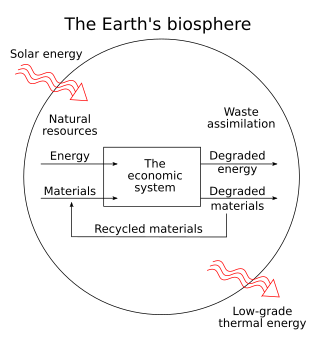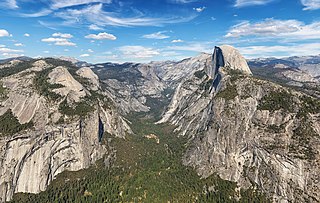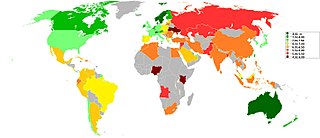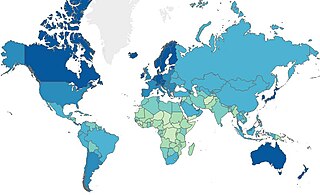| Indicator name | Region | Beginning year of study | End year of study | Year of publication | Authors |
|---|
| MEW -(A/S) | United States of America | 1929 | 1965 | 1972 | Nordhaus and Tobin |
| ISEW | United States of America | 1951 | 1986, 1992 | 1989, 1994 | Daly and Cobb |
| ISEW | Germany | 1950 | 1990 | 1994 | Diefenbacher |
| ISEW | Scotland, United Kingdom | 1980 | 1991 | 1994 | Moffatt and Wilson |
| ISEW | Netherlands | 1950 | 1992 | 1995 | Oegema and Rosenberg |
| ISEW | Netherlands | 1950 | 1992 | 1995 | Rosenberg, Oegema, Bovy |
| ISEW | Sweden | 1950 | 1992 | 1996 | Jackson and Stymne |
| ISEW | Austria | 1955 | 1992 | 1997 | Stockhammer et al. |
| ISEW | United Kingdom | 1950 | 1996 | 1997 | Jackson, et al. |
| ISEW | Austria | 1955 | 1992 | 1997 | Stockhammer, Hochreiter, Obermayr, Steiner |
| ISEW | Italy | 1960 | 1991 | 1998 | Giogio Guenno, Silvia Tiezzi |
| ISEW | Chile | 1965 | 1995 | 1999 | Castañeda |
| GPI | United States of America | 1950 | 1994 | 1995 | Cobb, Halstead, Rowe |
| GPI | United States of America | 1950 | 1996 | 1999 | Cobb, Goodman, Wackernagel |
| GPI | Australia | 1950 | 1996 | 1999 | Clive Hamilton |
| SNBI | Australia | 1966 | 1967 | 1999 | Lawn and Sanders |
| SNBI | Australia | 1994 | 1995 | 1999 | Lawn and Sanders |
| ISEW | Scotland, United Kingdom | 1980 | 1993 | 1999 | Hanley |
| GPI | Australia | 1950 | 2000 | 2000 | Hamilton and Dennis |
| GPI | Minnesota | 1960 | 1995 | 2000 | Minnesota Planning Agency |
| GPI | Alberta, Canada | 1961 | 1999 | 2001 | Mark Anielski |
| ISEW | Czech Republic | 1988 | 1998 | 2002 | Scasny |
| ISEW | Poland | 1980 | 1997 | 2003 | Gil and Sleszynski |
| ISEW | Wales, United Kingdom | 1990 | 2000 | 2003 | Matthews, Williams, Roberts, Munday |
| GPI | United States of America | 1950 | 2002 | 2004 | Venetoulis and Cobb |
| GPI | San Francisco Bay Area | 2000 | 2000 | 2004 | Venetoulis and Cobb |
| GPI | Vermont: Chittenden County and Burlington | 1950 | 2000 | 2004 | Costanza, Erickson et al. |
| ISEW | Thailand | 1975 | 1999 | 2005 | Matthew Clarke, Sardar M.N. Islam |
| GPI | Colombia | 1976 | 2003 | 2006 | Sánchez et al. |
| GPI | United States of America | 1950 | 2004 | 2006 | John Talberth, Clifford Cobb, and Noah Slattery |
| ISEW | Siena, Italy | 1999 | 1999 | 2006 | Pulselli, Ciampalini, Tiezzi, Zappia |
| ISEW | Belgium | 1970 | 2000 | 2006 | Brent Bleys |
| GPI | Victoria, Australia | 1986 | 2003 | 2006 | Clarke and Lawn |
| ISEW | Mexico | 1993 | 2005 | 2007 | Castillo López A. |
| ISEW | Netherlands | 1971 | 2004 | 2007 | Brent Bleys |
| IBES/ISEW | Puerto Rico | 1970 | 2006 | 2007 | Alameda-Lozada and Diaz-Rodriguez |
| GPI | China (4 regions) | 1991 | 2001 | 2007 | Zongguo Wen, Kunmin Zhanf, Bin Du, Yadong Li, Wei Li |
| GPI | Northern Vermont (7 counties) | 1950 | 2000 | 2007 | Bagstad and Ceroni |
| ISEW | Belgium | 1970 | 2004 | 2008 | Brent Bleys |
| R-ISEW | England (regions) | 1994 | 2005 | 2008 | Tim Jackson, Nat McBride, Saamah Abdallah and Nic Marks |
| ISEW | France | 1990 | 2002 | 2008 | Nourry |
| ISEW | Modena and Rimini, Italy | ? | ? | 2008 | Pulselli, F.M., Tiezzi, E., Marchettini, N., Bastiononi, S. |
| GPI | India | 1987 | 2003 | 2008 | Ed: Philip Lawn and Matthew Clarke (Book) |
| GPI | Australia | 1967 | 2006 | 2008 | Ed: Philip Lawn and Matthew Clarke (Book) |
| GPI | New Zealand | 1970 | 2005 | 2008 | Ed: Philip Lawn and Matthew Clarke (Book) |
| GPI | Japan | 1970 | 2003 | 2008 | Ed: Philip Lawn and Matthew Clarke (Book) |
| GPI | China | 1970 | 2005 | 2008 | Ed: Philip Lawn and Matthew Clarke (Book) |
| GPI | Thailand | 1975 | 2004 | 2008 | Ed: Philip Lawn and Matthew Clarke (Book) |
| GPI | Vietnam | 1992 | 2004 | 2008 | Ed: Philip Lawn and Matthew Clarke (Book) |
| Edmonton Wellbeing Index | Edmonton, Canada | 1981 | 2008 | 2009 | Anielski and Johannessen |
| ISEW | Tuscany, Italy | 1971 | 2006 | 2009 | Pulselli, F., Bravi, M., Tiezzi, E. |
| GPI | Ukraine | 2000 | 2007 | 2010 | Danilishin & Veklich |
| ISEW | Ecuador | 2001 | 2010 | 2011 | ANDRÉS PAÚL CORDERO SANMARTÍN |
| GPI | Utah | 1990 | 2007 | 2011 | Berik, G. and E. Gaddis |
| GPI | Baltimore City, County, and the State of Maryland | 1950 | 2005 | 2011 | Posner, S. and R. Costanza |
| GPI | Vermont | 1960 | 2010 | 2011 | Zencey, Eric, Sebastian Castro, Marigo Farr, Mark Isselhardt, Brian Kelly, Katharine Lucas, Julie Nash, Matt Pescatore, Meagan Pharis, Vinson Pierce, Tarah Rose, Daniel Sanchez, Aaron Witham, Zach Zimmerman. |
| GPI | Maryland | 1950 | 2004 | 2012 | MacGuire, S., S. Posner, H. Haake |
| ISEW | Netherlands | 1970 | 2010 | 2012 | Bob van Moerkerk |
| GPI | Northern Ohio | 1990 | 2005 | 2012 | Kenneth Bagstad and Md Rumi Shammin |
| ISEW | Flanders, Belgium | 1990 | 2009 | 2013 | Brent Bleys |
| GPI | Vermont | 1960 | 2011 | 2013 | Jon D. Erickson, Eric Zencey, Matthew J. Burke, Sam Carlson, and Zachary Zimmerman |
| GPI | Austria | 1955 | 1992 | 2013 | Kubiszewski, Costanza, Franco, Lawn, Talberth, Jackson, Aylmer |
| GPI | Belgium | 1970 | 2005 | 2013 | Kubiszewski, Costanza, Franco, Lawn, Talberth, Jackson, Aylmer |
| GPI | Netherlands | 1950 | 1992 | 2013 | Kubiszewski, Costanza, Franco, Lawn, Talberth, Jackson, Aylmer |
| GPI | Poland | 1980 | 1998 | 2013 | Kubiszewski, Costanza, Franco, Lawn, Talberth, Jackson, Aylmer |
| GPI | Italy | 1960 | 1990 | 2013 | Kubiszewski, Costanza, Franco, Lawn, Talberth, Jackson, Aylmer |
| GPI | Sweden | 1950 | 1992 | 2013 | Kubiszewski, Costanza, Franco, Lawn, Talberth, Jackson, Aylmer |
| GPI | United Kingdom | 1950 | 2001 | 2013 | Kubiszewski, Costanza, Franco, Lawn, Talberth, Jackson, Aylmer |
| GPI | United States | 1950 | 2005 | 2013 | Kubiszewski, Costanza, Franco, Lawn, Talberth, Jackson, Aylmer |
| GPI | Chile | 1950 | 1992 | 2013 | Kubiszewski, Costanza, Franco, Lawn, Talberth, Jackson, Aylmer |
| GPI | Australia | 1965 | 2006 | 2013 | Kubiszewski, Costanza, Franco, Lawn, Talberth, Jackson, Aylmer |
| GPI | New Zealand | 1970 | 2005 | 2013 | Kubiszewski, Costanza, Franco, Lawn, Talberth, Jackson, Aylmer |
| GPI | China | 1970 | 2006 | 2013 | Kubiszewski, Costanza, Franco, Lawn, Talberth, Jackson, Aylmer |
| GPI | India | 1985 | 2003 | 2013 | Kubiszewski, Costanza, Franco, Lawn, Talberth, Jackson, Aylmer |
| GPI | Japan | 1970 | 2003 | 2013 | Kubiszewski, Costanza, Franco, Lawn, Talberth, Jackson, Aylmer |
| GPI | Thailand | 1975 | 2005 | 2013 | Kubiszewski, Costanza, Franco, Lawn, Talberth, Jackson, Aylmer |
| GPI | Vietnam | 1990 | 2005 | 2013 | Kubiszewski, Costanza, Franco, Lawn, Talberth, Jackson, Aylmer |
| GPI | Global | 1950 | 2005 | 2013 | Kubiszewski, Costanza, Franco, Lawn, Talberth, Jackson, Aylmer |
| ISEW | Tuscany and Marche, Italy | 1999 | 2009 | 2013 | Chelli, Ciommi, Gigliarano |
| GPI | Maryland | 1960 | 2013 | 2014 | Hans Haake |
| GPI | Hawaii | 2000 | 2020 | 2022 | Regina Ostergaard-Klem, Kirsten Oleson |
| GPI | Colorado | 1960 | 2011 | 2014 | Chris Stiffler |
| ISEW | Flanders, Belgium | 1990 | 2012 | 2014 | Brent Bleys |
| GPI | Washington | 1960 | 2015 | 2014 | Siefer Amber & Rossman Jamie |
| GPI | Krasnoyarsk Krai, Russia | 2005 | 2011 | 2014 | Pyzhev, Pyzheva & Zander |
| GPI | Brazil | 1970 | 2010 | 2015 | Daniel Caixeta Andrade, Junior Ruiz Garcia |
| GPI | Hong Kong | 1968 | 2010 | 2015 | Claudio O Delang (Book) |
| GPI | Singapore | 1968 | 2010 | 2015 | Claudio O Delang (Book) |
| GPI | Massachusetts | 1960 | 2012 | 2015 | Jon D. Erickson, Eric Zencey, and Zachary Zimmerman |
| GPI | Oregon | 1960 | 2010 | 2015 | Ida Kubiszewski, Robert Costanza, Nicole E. Gorko, Michael A. Weisdorf, Austin W. Carnes, Cathrine E. Collins, Carol Franco, Lillian R. Gehres, Jenna M. Knobloch, Gayle E. Matson, Joan D. Schoepfer |
| ISEW | Greece | 2000 | 2012 | 2015 | Angeliki Menegaki and Konstantinos Tsagarakis |
| ISEW | Flanders, Belgium | 1990 | 2014 | 2016 | Brent Bleys |
| GPI | Missouri | 2000 | 2014 | 2016 | Zencey, Eric |
| ISEW | Flanders, Belgium | 1990 | 2015 | 2017 | Brent Bleys |
| GPI | US, 50 States | 2010 | 2011 | 2017 | Mairi-Jane Fox |
| GPI | Liaoning, China | 1978 | 2011 | 2017 | Yu Hou |
| ISEW | Spain | 1995 | 2014 | 2017 | Ignacio Rodriguez Rodriguez |
| GPI | California | 2010 | 2014 | 2018 | Brown and Lazarus |
| ISEW | Turkey | 2001 | 2012 | 2018 | Angeliki Menegaki |
| N/RWI | Germany, Bavaria, Hamburg, North Rhine/Westphalia, Rhineland-Palantinate, Saxonia, Thuringia | 1991 | 2014 | 2018 | Held, Rodenhäuser, Diefenbacher, Zieschank |
| ISEW | Spain | 1970 | 2012 | 2018 | Tadhg O'Mahony, Paula Escardó-Serra, Javier Dufour |
| SWI | Italy | 1960 | 2014 | 2018 | Mirko Armiento |
| ISEW | Luxembourg | 1960 | 2010 | 2018 | Benedetto Rugani, Antonino Marvuglia, Federico Maria Pulselli |
| GPI | Vermont | 2000 | 2015 | 2018 | Eric Zencey |
| GPI | Ohio | 2009 | 2016 | 2018 | Rob Moore |
| GPI & ISEW | Finland | 1945 | 2017 | 2018 | Hoffren |
| GPI & ISEW | 19 regions, Finland | 1960 | 2017 | 2018 | Hoffren |
| GPI | 10 Chinese megacities (Beijing, Tianjin, Nanjing, Shanghai, Guangzhou, Chongqing, Chengdu, Xi'an, Wuhan, Shenyang), China | 199x | 201x | 2018 | Lu Huang |
| ISEW | Flanders, Belgium | 1990 | 2016 | 2018 | Brent Bleys, Jonas Van der Slycken |
| GPI | Iceland | 2000 | 2016 | 2018 | Anna Balafina |
| GPI | Australia | 1962 | 2013 | 2019 | Kenny et al. |
| GPI | 31 provinces, China | 1997 | 2016 | 2019 | Xianling Long, Xi Ji |
| GPI | China | 1997 | 2016 | 2019 | Xianling Long, Xi Ji |
| GPI | 28 OECD countries | 1995(*) | 2015(*) | 2019 | Pais, Alfonso, Marques, Fuinhas |
| GPI | South Korea and Malaysia | 1980 | 2014 | 2019 | Mastura Hashim, Azhar Mohamad, Imtiaz Mohammad Sifat |
| GPI | South Australia | 1986 | 2016 | 2019 | Philip Lawn |
| ISEW | Romania | 1990 | 2017 | 2019 | Butnariu & Luca |
| ISEW | Flanders | 1990 | 2017 | 2019 | Brent Bleys, Jonas Van der Slycken |
| GPI | New Zealand | 1970 | 2016 | 2019 | Patterson et al. |
| GPI | 21 cities in the Rust Belt, United States | 1990 | 2015 | 2019 | LaToya S. Moten |
| ISEW | Ecuador | 2001 | 2015 | 2020 | Sanchez et al. |
| GPI | Ohio | 2009 | 2018 | 2020 | Rob Moore |
| GPI | North Carolina | 2005 | 2018 | 2020 | Juhi Modi |
| NWI | Germany | 1991 | 2018 | 2020 | Held, Rodenhäuser, Diefenbacher |
| ISEW | Flanders | 1990 | 2018 | 2020 | Brent Bleys, Jonas Van der Slycken |
| GPI | Rio de Janeiro state in Brazil | 2002 | 2016 | 2021 | Senna G.N. and Serra E.G. |
| GPI | Iceland | 2000 | 2019 | 2021 | David Cook and Brynhildur Davíðsdóttir |
| GPI | China and 29 provinces | 2016 | 2016 | 2021 | Guan, Weng, Zhao, Lin, Zhang and Tu |
| GPI | United States of America, and California | 1995 | 2017 | 2022 | Eli Lazarus and Clair Brown |
| ISEW/GPI | Belgium | 1995 | 2018 | 2023 | Jonas Van der Slycken, Brent Bleys |
| ISEW/GPI | EU-15 and its Member States | 1995 | 2018 | 2024 | Jonas Van der Slycken, Brent Bleys |









